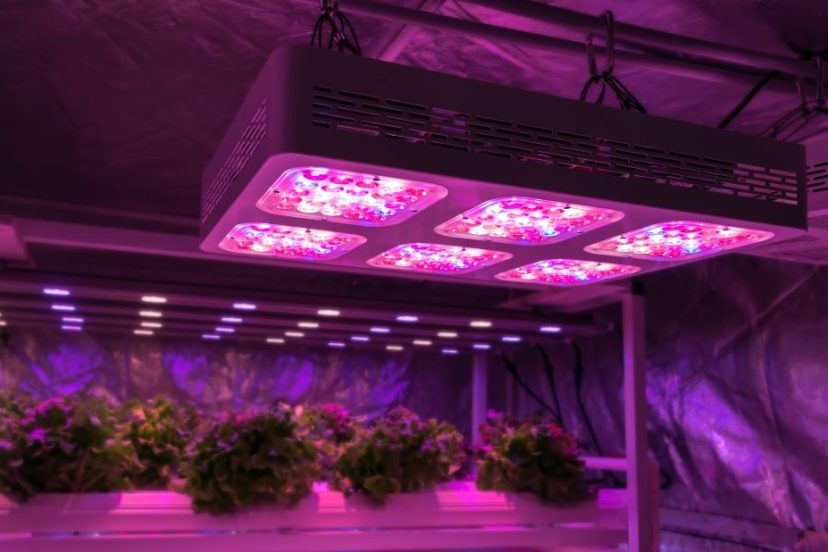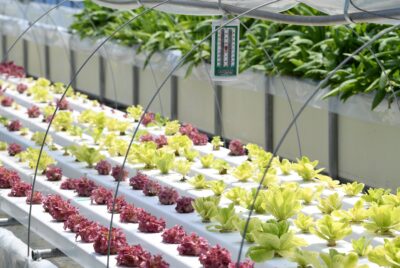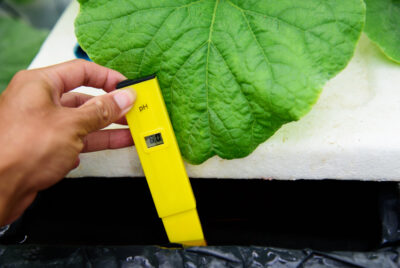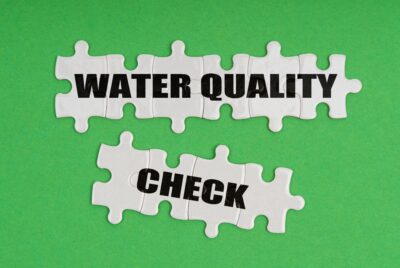Hydroponic Grow Lights
We may earn a commision from purchases made using our links. Please see our disclosure to learn more.
A Comprehensive Guide on Hydroponic Grow Lights.
As an enthusiastic indoor hydroponic gardener, I understand the importance of providing my plants with optimal growing conditions. From Co2 generators to water chillers, I have tried them all. Therefore, choosing the right hydroponic grow light is crucial for successful indoor gardening. In this comprehensive guide, I will take you through the world of hydroponic lighting systems, covering their different types, factors to consider when choosing them, selecting lights for various growth stages, selecting certain controllers and instruments, placement and hanging height, maintenance tips, supplementing with natural light, and best practices for effective use.
Introduction
Indoor hydroponic gardening allows us to grow plants without soil, using a nutrient-rich water solution. However, natural sunlight is often insufficient indoors. That’s where grow lights come into play. They provide the necessary light spectrum and intensity for healthy plant growth. So, let’s delve deeper into this fascinating topic.
Understanding Grow Lights
Grow lights are artificial lighting systems designed to mimic sunlight’s spectrum and intensity. Consequently, they substitute natural light, supplying plants with the energy needed for photosynthesis, growth, and development.
Importance of Proper Lighting in Hydroponics
Proper lighting is crucial in hydroponics since it directly impacts plant growth and yield. Without adequate lighting, plants may experience stunted growth, become leggy, and produce poor yields.
Types of Hydroponic Lighting Systems
Several types of grow lights are available, each with its advantages. Let’s explore the most common ones:
LED grow lights: Energy-efficient and versatile, with a long lifespan, LED lights provide a targeted light spectrum suitable for different growth stages. Additionally, they produce less heat, reducing the need for additional cooling.
High-intensity discharge (HID) lights: HID lights, including metal halide (MH) and high-pressure sodium (HPS) lights, emit high light output. MH lights are ideal for the vegetative stage, promoting lush foliage growth, while HPS lights stimulate robust blooming and fruit development during the flowering and fruiting stages. HID lights require ballasts for operation and generate more heat, necessitating proper ventilation and cooling systems.
Fluorescent grow lights: Cost-effective and suitable for smaller plants, seedlings, and clones, fluorescent grow lights, particularly T5 and T8 fluorescent tubes, are popular choices among beginners. They produce less heat and are gentle on delicate plants. However, their light intensity may be lower compared to LED and HID lights.
Factors to Consider When Choosing Grow Lights
Several factors need to be considered to ensure optimal plant growth and energy efficiency. Let’s take a closer look:
Light spectrum and intensity: Different growth stages require varying light spectrums. Blue lights are beneficial during the vegetative stage, promoting healthy leaf development and robust root growth. Red or full spectrum lights are essential during the flowering and fruiting stages to support blooming and fruit development.
Energy efficiency: LED lights are known for their energy efficiency, converting a higher percentage of electricity into usable light for plants. Choosing lights with high PAR (Photosynthetically Active Radiation) output and energy-saving features can help reduce operational costs.
Cooling requirements: Lights generate heat, and excessive heat can harm plants or affect their growth. Therefore, it’s essential to consider the cooling requirements of the grow lights you choose. LED lights generally produce less heat compared to HID lights. Nevertheless, proper ventilation and cooling systems may still be necessary to maintain an optimal temperature for plant growth.
Cost: Budget is an important consideration for any gardener. When selecting grow lights, it’s essential to evaluate both the initial cost and long-term operational costs. LED lights may have a higher upfront cost, but their energy efficiency and long lifespan can result in significant savings over time.
Selecting the Right Grow Lights for Different Growth Stages
Different growth stages have specific lighting requirements. Here’s a guide to selecting the right grow lights for each stage:
Seedling and vegetative stage: During the seedling and vegetative stage, plants require a higher intensity of blue spectrum light to promote healthy leaf development and robust root growth. Therefore, full-spectrum LED grow lights with a balanced spectrum or specifically designed for vegetative growth are ideal choices, especially for hydroponic herbs. Ensuring the lights are positioned at an appropriate distance from the plants is crucial to avoid light burn and promote optimal growth.
Flowering and fruiting stage: During the flowering and fruiting stage, plants benefit from a higher intensity of red or full spectrum light. HID lights, such as HPS, are popular choices for this stage as they provide the necessary spectrum to support blooming and fruit development. Additionally, full spectrum LED grow lights with customizable spectrums can be adjusted to meet the specific light requirements of different flowering plants.
Placement and Hanging Height of Grow Lights
The proper placement and hanging height of grow lights are crucial for maximizing their effectiveness and preventing plant damage. Consider the following tips:
The optimal distance between plants and lights: Maintaining an optimal distance between the grow lights and the tops of your plants is essential. This distance can vary depending on the light intensity, plant species, and growth stage. As a general rule, LED lights can be placed closer to the plants (12-24 inches) due to their low heat output. HID lights, on the other hand, require a greater distance (18-36 inches) to prevent heat stress.
Adjusting the height as plants grow: As plants grow taller, it’s important to adjust the hanging height of the grow lights accordingly. Raising the lights gradually ensures that all parts of the plant receive adequate light, promoting even growth throughout the plant.
Maintaining and Troubleshooting Grow Lights
Proper maintenance of grow lights is essential to ensure their longevity and optimal performance. Here are some maintenance tips and troubleshooting techniques:
Cleaning and dusting: Dust and debris can accumulate on the surface of grow lights, reducing their efficiency. Therefore, it’s important to regularly clean the lights using a soft cloth or a gentle brush to remove any dirt or dust. This will help maximize the light output and prevent any potential blockage.
Replacing bulbs or LEDs: Over time, bulbs in HID or LEDs in LED lights may degrade and lose effectiveness. Monitoring the performance of the lights and replacing any faulty or worn-out components promptly is crucial. Follow the manufacturer’s guidelines for bulb replacement or consult a professional if needed.
Addressing heat and ventilation issues: Excessive heat can damage plants and reduce the lifespan of grow lights. Ensuring proper ventilation and cooling systems are in place is essential to maintain a suitable temperature for plant growth. Regularly monitor the temperature and address any heat-related issues promptly to prevent heat stress.
Supplementing Grow Lights with Natural Light
While lighting systems are essential for indoor gardening, incorporating natural light can provide additional benefits. Consider the following:
Benefits of natural light in hydroponics: Natural light contains a broad spectrum of wavelengths that plants thrive on. It can enhance plant growth, improve coloration, and promote overall health. Natural light also helps in the production of certain vitamins and secondary metabolites, which can positively impact the flavor and nutritional value of crops.
Balancing natural light and artificial grow lights: You can supplement artificial grow lights with natural sunlight depending on your indoor gardening setup. A good example of this is if you use a vertical hydroponic garden. Positioning your hydroponic system near a window or using translucent coverings to allow natural light to reach the plants can be beneficial. However, it’s important to strike a balance and avoid excessive light exposure that may cause light burn or uneven growth.
Best Practices for Using Indoor Gardening Lights
To make the most out of your hydroponic grow lights, follow these best practices:
Creating a lighting schedule: Establish a consistent lighting schedule for your plants. Different growth stages require varying light cycles. Generally, plants need 14-16 hours of light per day during the vegetative stage and 10-12 hours during the flowering stage. Using timers to automate the lighting schedule helps maintain consistency.
Monitoring and adjusting light cycles: Regularly monitor your plants’ response to the lighting conditions. Observe their growth patterns, leaf coloration, and overall health. Adjust the light cycles or spectrum if necessary to address any signs of stress or deficiencies. This fine-tuning ensures optimal growth and yield.
Preventing light burn: Light burn occurs when plants receive excessive light, leading to leaf bleaching or scorching. To prevent light burn, avoid placing the grow lights too close to the plants. Regularly monitor the distance and intensity of the lights. If you notice signs of light burn, increase the hanging height or reduce the light intensity to protect your plants.
Conclusion
Choosing the right hydroponic lighting system is crucial for successful indoor gardening. Consider the different types of grow lights, factors to consider when choosing them, and their suitability for different growth stages. Proper placement, maintenance, and supplementation with natural light further enhance the growth and yield of your hydroponic plants. By following best practices and staying attentive to your plants’ needs, you can create an optimal lighting environment for a healthy and thriving indoor garden.</p>
Incorporating grow lights into your indoor gardening setup opens up a world of possibilities. With the right lights and proper care, you can cultivate a wide variety of plants, from vibrant leafy greens to blooming flowers and flavorful fruits.
Remember to regularly monitor your plants, adjust the lighting as needed, and provide them with the ideal conditions for growth. Maybe a hydroponic grow tent is needed.
By harnessing the power of these yield-boosting lights, you can embark on a rewarding journey of indoor hydroponic gardening and enjoy the beauty and abundance of your thriving garden.
FAQs
Can I use regular household light bulbs for hydroponic gardening?
While regular household light bulbs may emit light, they are not suitable for hydroponic gardening. Plants require specific light spectrums for optimal growth, and regular bulbs may lack the necessary intensity and spectrum. Investing in specialized hydroponic grow lights designed for plant cultivation is best.
How long do grow lights typically last?
The lifespan of grow lights varies depending on the type and quality of the lights and their usage. LED grow lights can last up to 50,000 hours or more, while HID lights generally have a lifespan of around 10,000 hours. Regular maintenance, such as replacing worn-out bulbs or diodes, can help extend their longevity.
Can I mix different types of lights in my hydroponic setup?
Yes, combining different types of lights in your hydroponic setup is possible. This approach can provide a more balanced light spectrum and coverage for your plants. However, it’s important to consider the specific light requirements of your plants and ensure compatibility between different types of grow lights.
How do I determine the hanging height for my grow lights?
The hanging height of grow lights depends on factors such as the light intensity, plant species, and growth stage. As a general guideline, start with a higher hanging height and gradually lower it while monitoring your plants’ response. Maintain a distance that allows adequate light penetration without causing light burn or heat stress.
Remember, selecting the right grow lights, providing the ideal lighting conditions, and maintaining a healthy balance between artificial and natural light, especially in a hydroponic greenhouse, will play a significant role in the success of your indoor hydroponic garden. Enjoy the journey and the rewards of cultivating thriving plants all year round.





Comments are closed.